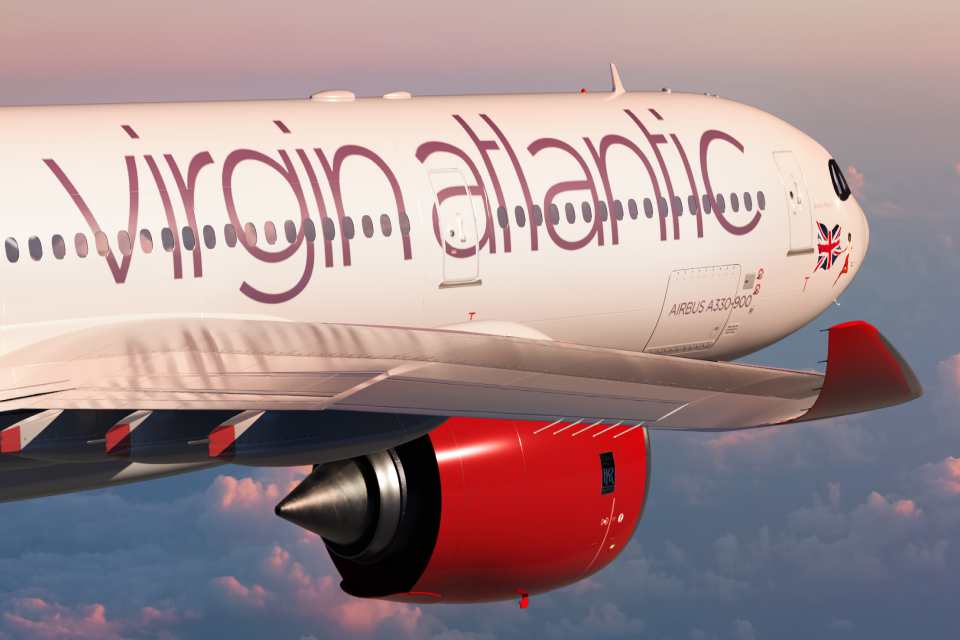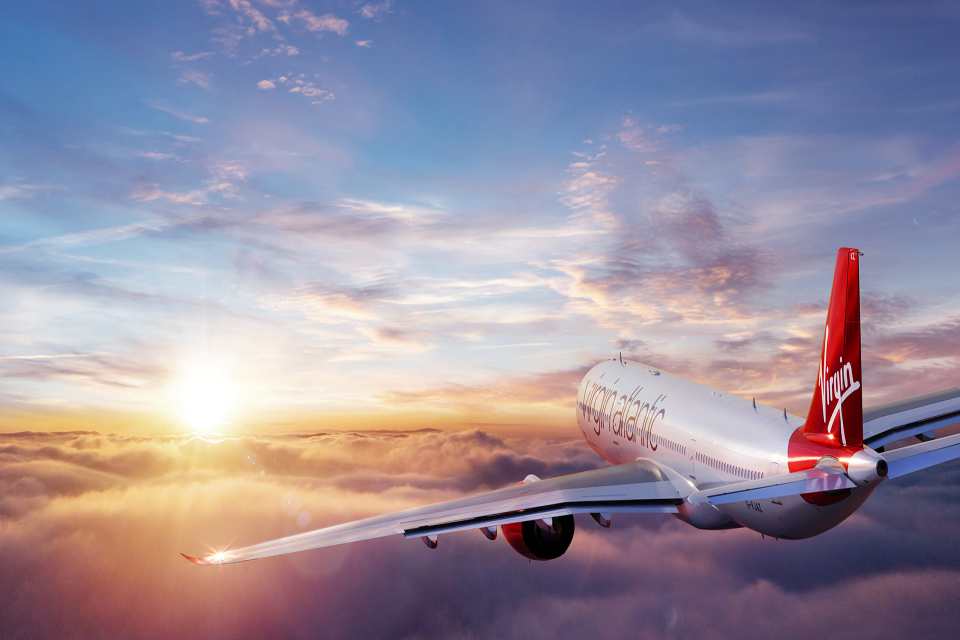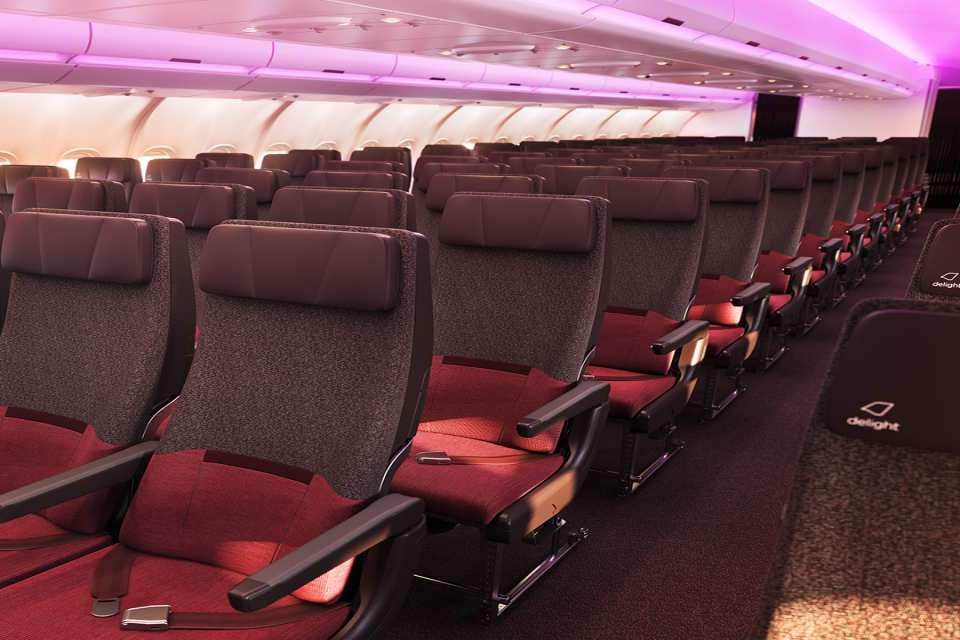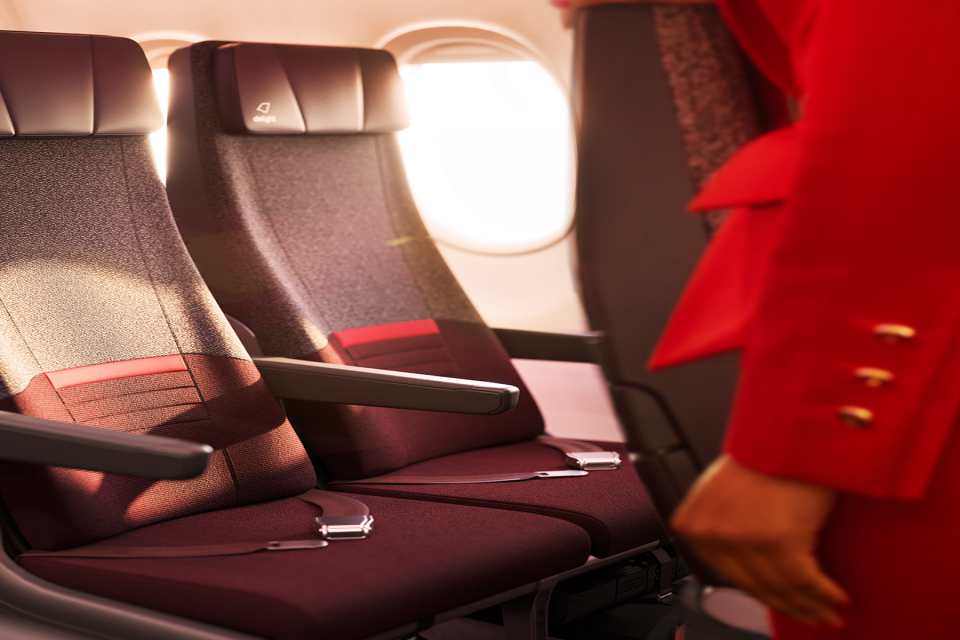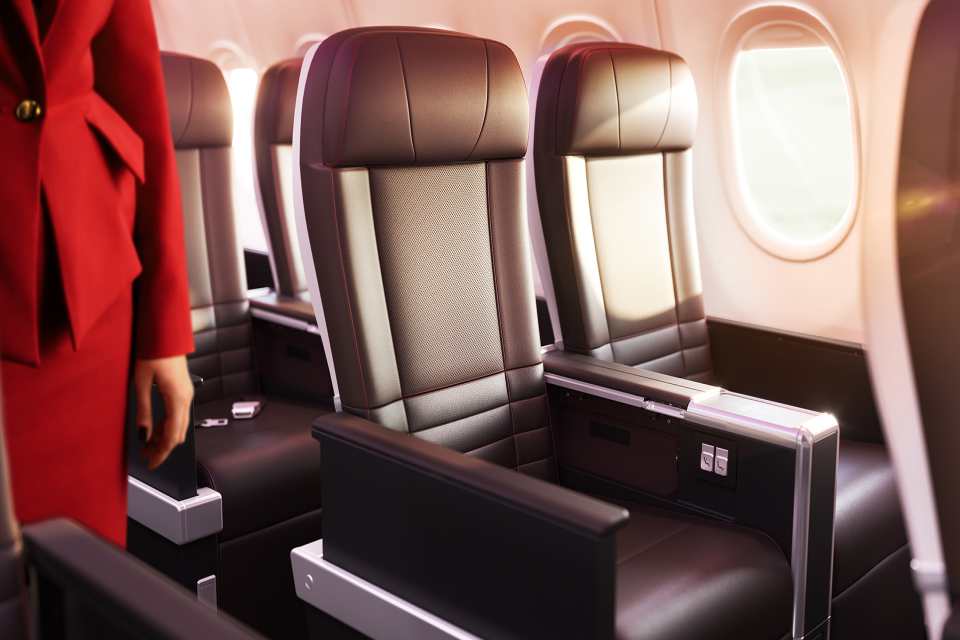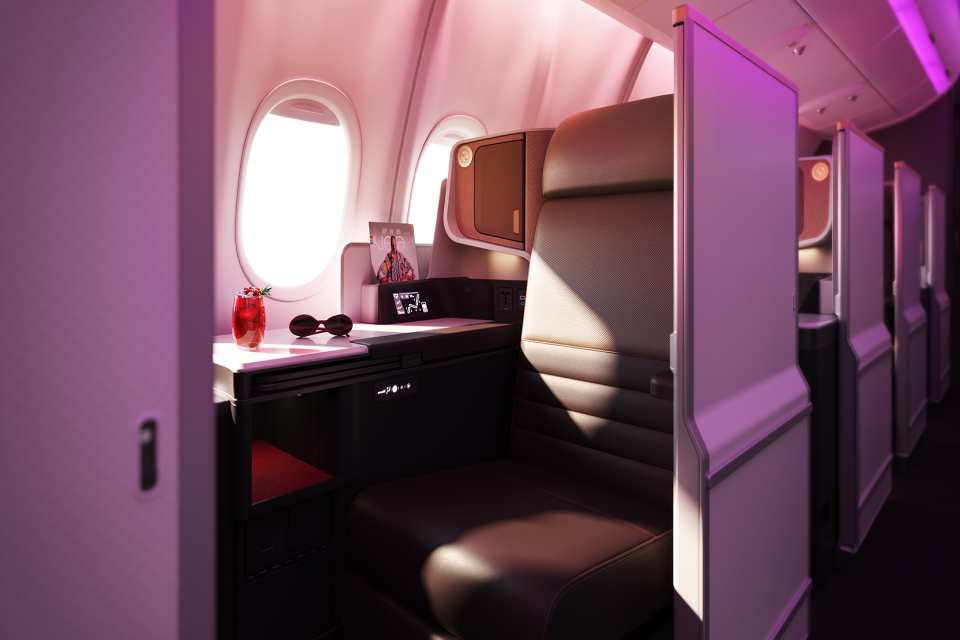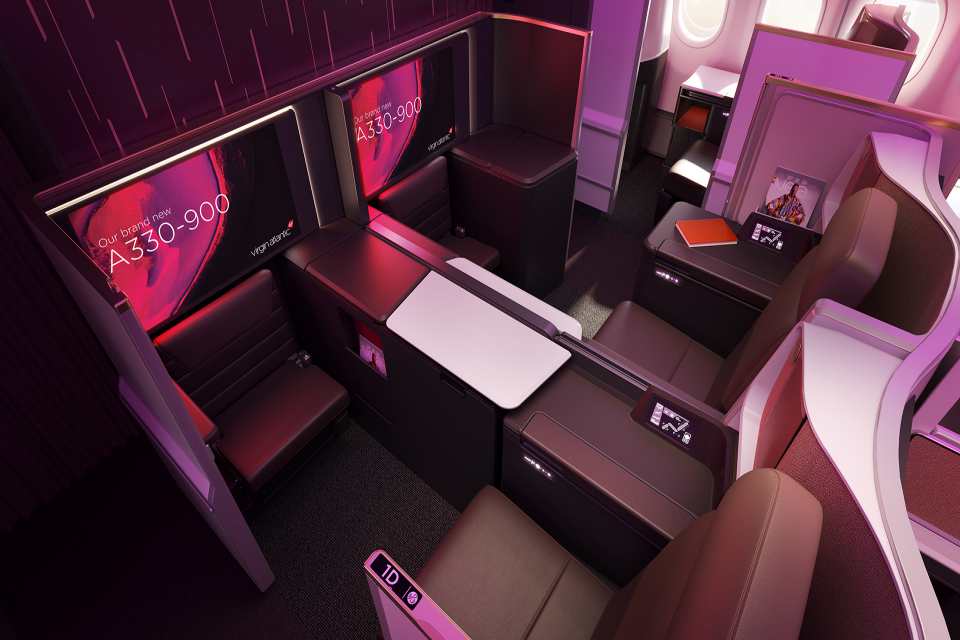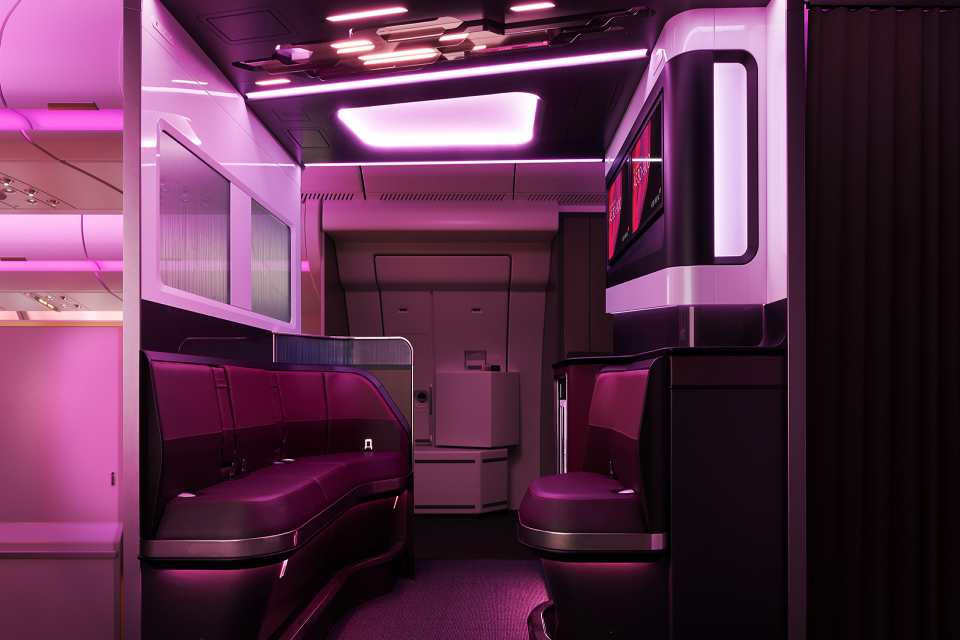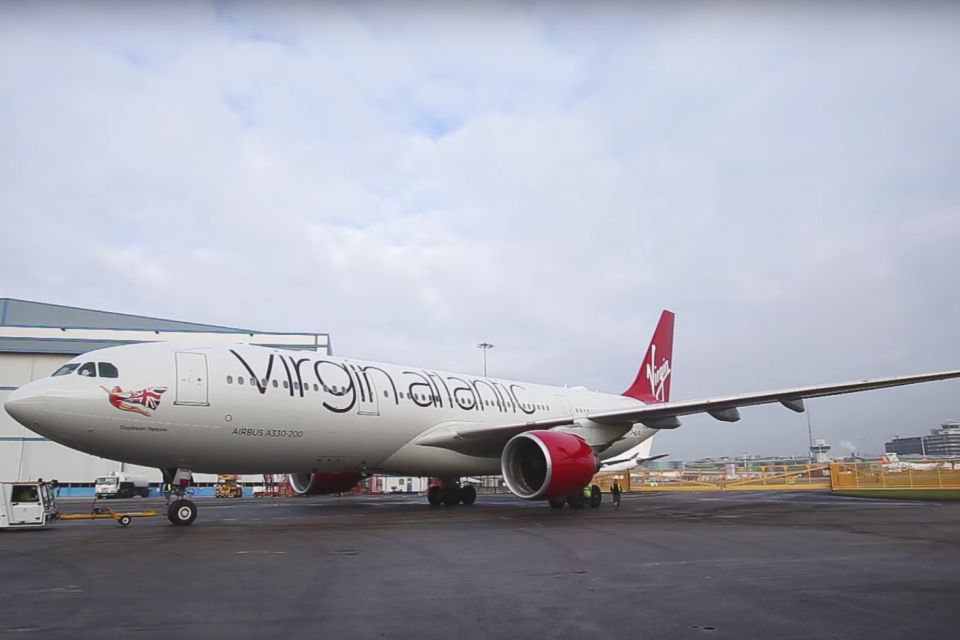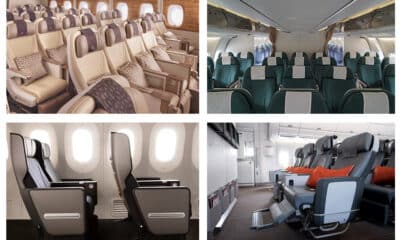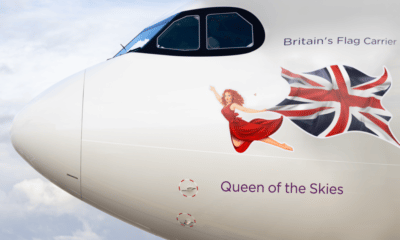Aviation
Virgin Atlantic’s new A330 Neo passengers will enjoy a luxurious experience.
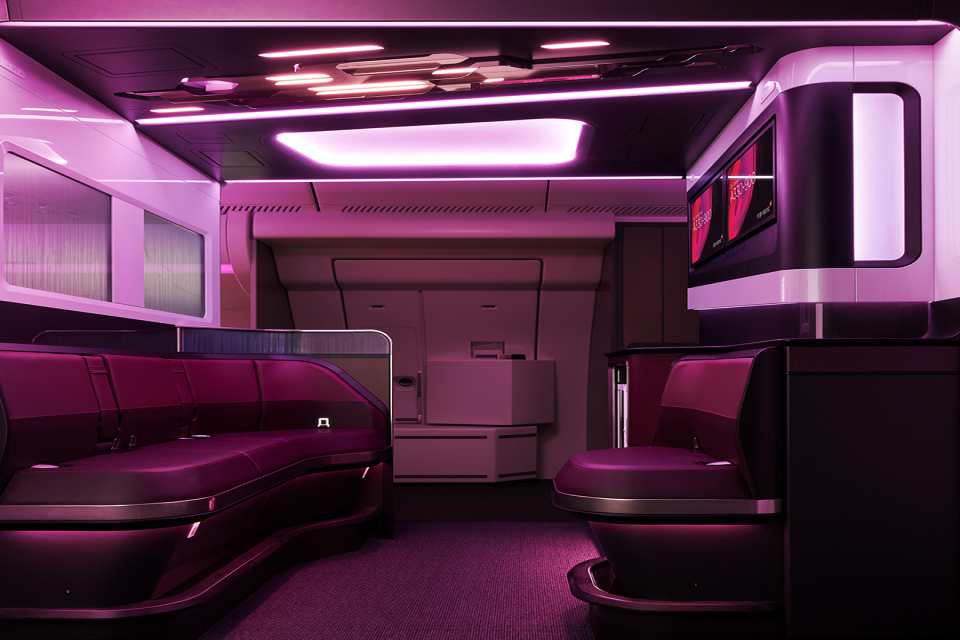
- The Airbus A330-900neo will feature the latest generation Upper Class cabin, including its iconic social space and new innovation, The Retreat Suite
- Increased connectivity with in-seat wireless charging, Bluetooth connectivity in all cabins and its fastest ever Wi-Fi
- The new aircraft is crucial to the airline’s fleet transformation into the cleanest in the sky
- Boston will be the A330neo’s first route.
Virgin Atlantic has revealed for the first time its much awaited Airbus A330neo, which is designed to give a premium, personalised experience for every single customer. The Upper Class cabin of Virgin Atlantic now has a brand new seat, an upgrade of its distinctive communal space, and the introduction of The Retreat Room, the most capacious suite in the airline’s history.
Customers will have more opportunities to stay connected than ever before throughout the aircraft. Customers in Premium and Upper Class may benefit from game-changing in-seat wireless charging, while customers in other cabins can enjoy an increased number of USB connections, Bluetooth equipped entertainment systems, and the airline’s fastest ever Wi-Fi.
Virgin Atlantic was the first UK airline to place a firm order for up to 16 Airbus A330neos in 2019, reiterating its commitment to flying the cleanest, greenest fleet in the skies. Following a multibillion-dollar fleet transformation investment over the last decade, the airline now operates a fleet with an average aircraft age of little under seven years and 68 percent next generation aircraft. By the beginning of 2027, this will have increased to 100 percent next generation. This means that Virgin Atlantic’s aircraft are outfitted with the most efficient engines and cutting-edge technologies to save fuel and minimize pollution. So far, this has resulted in a 20% reduction in fleet carbon emissions.
We will reduce carbon emissions by 10% over the next decade. The A330-900 neos are designed to be 11% more fuel and carbon efficient than the A330-300 they are replacing, with a 50% reduction in airport noise contour.
The first customer flight on Virgin Atlantic’s A330neo is scheduled for early October to Boston. Ticket sales will begin later this month. The airline will receive three aircraft beginning in September 2022, with the remaining deliveries occurring between 2023 and 2026.
First Class
The Retreat Suite is a fresh new addition to Virgin Atlantic’s Upper Class offering, consisting of two unique suites at the cabin’s front. The airline’s largest suite to yet, with a 6’7″ direct seat to totally flat bed and a 27″ touchscreen with Bluetooth connectivity and wireless charging. With an ottoman that doubles as an extra seat in each suite, up to four people can dine, converse, or play games in their own private social zone. Customers can have a romantic dinner or relax in comfort while watching a movie.
Aside from The Retreat Suite, the A330neo will feature 30 brand new Upper Class suites. The entirely forward-facing suite provides greater space and storage, as well as a completely shutting privacy door. With a “do not disturb” function. It contains passenger-controlled mood lighting, a 17.3″ touchscreen TV, and even a mirror to ensure passengers appear runway ready.
Premium
Stylish accents make a great impact in Premium, which has 46 seats on the A330neo. The airline’s signature burgundy Premium seats with a 38″ pitch remain, but they’re joined by calf rests in every seat and a 13.3″ touchscreen with Bluetooth audio. The airline is also providing an in-seat wireless charging pad to its Premium passengers.
Economy
Customers will enjoy the largest ever economy screen at 13.3″, an intuitive touchscreen, and Bluetooth audio to connect headphones, with customers able to use their phone as a controller in the new Economy cabin. There’s also lots of storage, as well as AC power and USB connections for charging devices.
The Retreat Suite
The Loft, the airline’s award-winning social space, is a focal element of the cabin design as customers enter the plane and is an essential aspect of the Upper Class experience. It has eight seats and an adaptation of the design from the Airbus A350, allowing guests to sit and speak or enjoy refreshments from the new self-service fridge and beverages dispenser. Customers can also use Bluetooth headphones to connect to the two panoramic 27″ touchscreens or use wireless charging for their devices.

Aviation
South Korea Introduces Cutting-Edge MRO Center for F-35 and IAI

South Korea is set to make waves in the aerospace industry with the establishment of a cutting-edge Maintenance, Repair, and Overhaul (MRO) hub for F-35 fighter jets and IAI (Israel Aerospace Industries) aircraft.
Central to this initiative is the specialization in converting Boeing 777-ERSF, colloquially known as the “Big Twin,” from passenger to freighter configurations. Under the terms of the agreement, IAI will spearhead the conversion of six B777-300ER and B777-200LR aircraft annually, commencing in 2024. This strategic move is in response to the anticipated surge in demand for wide-body freighter aircraft capable of long-haul flights.
Furthermore, South Korea’s forward-looking vision extends beyond aircraft conversion, with plans to establish a Lockheed Martin F-35 maintenance, repair, and overhaul depot at Cheongju Air Base by 2027. This strategic move not only enhances the operational readiness of South Korea’s air force but also positions the nation as a regional hub for F-35 maintenance expertise.
In preparation for this expansion, thirty Republic of Korea Air Force (ROKAF) engineers and technicians are slated to undergo intensive maintenance training in the United States in 2025, a testament to South Korea’s commitment to fostering local expertise and talent.
IAI’s visionary approach to certification and collaboration underscores the potential for transformative change. With plans for the 777-300ERSF certification process set to unfold in Israel, followed by the rigorous scrutiny of regulatory agencies such as the US Federal Aviation Administration (FAA), the stage is set for the ‘Big Twin’ to soar to new heights of success.
In partnership with esteemed entities like STK and Incheon International Airport Corporation, this collaboration promises to unleash a wave of benefits, amplifying the resilience and competitiveness of the Korean aviation sector while catalyzing job creation and economic prosperity.
Aviation
Lockheed Martin Expresses Interest in Joining AMCA Project

Lockheed Martin, a leading global aerospace and defense company, is demonstrating its dedication to strengthening collaborations with India’s research, industry, and academic sectors. With its rich experience in the aerospace industry and renowned for building some of the world’s most advanced jets, Lockheed Martin is now exploring opportunities to contribute to India’s aerospace sector, potentially providing a significant boost to aerospace technology in the country.
Randy Howard, Vice President of Global Pursuits at Lockheed Martin Aeronautics, recently underscored their interest in exploring “advanced transfer of technology opportunities” with Indian partners, signaling a proactive approach towards fostering technological exchange and advancement in the aerospace domain.
India has been at the forefront of fighter jet development since the 1970s, having produced its own cost-effective fighter jets and combat helicopters, while continually upgrading to maintain competitiveness on a global scale.
Lockheed Martin stands as a dominant force in the aircraft industry, renowned for developing cutting-edge planes like the F35 and F22, some of the most advanced fighter jets globally. They’ve also contributed to projects like the South Korean KF21 aircraft for defense purposes through collaborations.
Now, Lockheed Martin has set its sights on India’s defense sector manufacturing processes, expressing interest in partnering with India on its most anticipated project, the Advanced Medium Combat Aircraft (AMCA), likely to be a 5th generation fighter jet for the Indian military.
Their proposed collaboration could involve a spectrum of advanced technologies, including the Auto Ground Collision Avoidance System (Auto GCAS), a life-saving technology that intervenes to prevent ground collisions, thus significantly enhancing flight safety for Indian pilots.
Lockheed Martin is extending its expertise to design and develop an indigenous cockpit for the F-21 fighter jets, which India is procuring. This collaboration with Tata also includes the development of fighter jet wings. Established in 2023, this partnership adopts a “Ground Floor Design” strategy aimed at equipping India with an in-depth comprehension of 5th-generation cockpit technology and Man-Machine Interface (MMI) systems.
As India’s Fighter jet program advances with finalized aircraft frame and engine prototypes, Lockheed Martin has expressed interest in joining the project. They see a groundbreaking opportunity in cooperative 5th Generation Fighter Development, potentially expediting the AMCA program’s progress through technology and expertise sharing.
Furthermore, Lockheed Martin is keen on collaborating on large-wing, jet-powered UAV platforms, which could enhance India’s unmanned aerial capabilities.
While discussions are ongoing, and specific collaboration details await finalization, this initiative represents a potentially transformative stride in India’s aerospace self-reliance journey and Lockheed Martin’s strategic engagement with the Indian market.
Aviation
Can Airline Seat Cushions Be Used As Life Jackets?

In the event of an aircraft ditching into water, there’s a common question: Can aircraft seats serve as an alternative to life jackets for flotation? The answer lies in understanding their respective functions.
While seat cushions can provide some buoyancy in water, they are not intended nor certified to function as life jackets. Their primary purpose is to offer cushioning for passengers during flight. On the other hand, life jackets are meticulously engineered to keep individuals afloat in water, equipped with buoyancy materials, secure straps, and reflective elements for visibility. They offer numerous advantages over mere cushions.
While a seat cushion might offer temporary assistance in staying afloat, it’s not a dependable substitute for a proper life jacket during an emergency. It’s crucial to utilize approved safety equipment when near bodies of water. A life jacket, designed to keep a person buoyant for extended periods, offers the rigidity needed for prolonged flotation and allows for easy movement of the arms to navigate effectively.
What fabric is used in aircraft seats?
Seats are meticulously designed to fulfill multiple purposes, ensuring passenger comfort, safety, and protection from unforeseen circumstances like fires and accidents. A typical design incorporates an aluminum frame with blocks of polyurethane foam affixed to it. Additionally, a layer of fire-resistant fabric, such as Kevlar or Nomex, is often applied over this framework, topped with a layer of cloth or leather.
Leather seats, while luxurious, are more expensive compared to traditional cloth seats. The majority of fabrics used in seat upholstery contain at least 90% wool fiber, with the remainder typically consisting of polyamide (nylon). Wool stands out as the primary fiber chosen for commercial airline seating fabric due to its desirable properties and suitability for such applications.
What is the lightest economy seat?
In recent times, airlines have been downsizing seat dimensions to accommodate more passengers, resulting in reduced cushion length and leg space. This contrasts with earlier times when airlines offered more generously cushioned seats and ample amenities.
According to Recaro Seats Company, their SL3710 model represents the lightest economy class seat available, weighing in at a mere 8 kg (17.6 lb.), setting a new standard in aircraft seating.
For individuals weighing more than 350 pounds, fitting into a standard economy-class seat can be a challenge due to the narrower dimensions. Economy seats, also referred to as “coach,” “standard,” or “main cabin” seats, typically range from about 40 to 48 centimeters in width, further emphasizing the need for more accommodating seating options.

